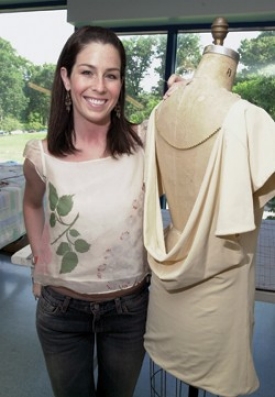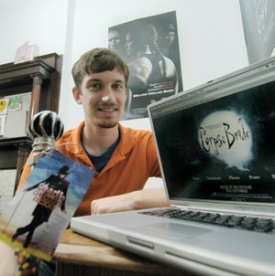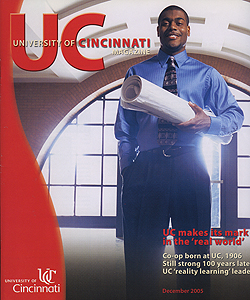University of Cincinnati co-op sets standard for rest of world

Listing experience at Procter & Gamble, Toyota and General Motors, Michael Alexander's resume more closely resembles that of a seasoned professional than a student.
There is a moment of clarity, and it all begins to make sense. Think of a gear meshing into place or the sound of a lock the moment it is sprung. It clicks.
Cooperative education first clicked in the mind of Herman Schneider in the early 1900s. Next, it clicked for the 27 University of Cincinnati engineering students who street-tested Dean Schneider's co-op model in 1906.
His idea was for students to alternate between developing theoretical knowledge in the classroom and applying that knowledge in practical ways in the workplace. For those 27 men, co-op clicked the moment they realized their studies at the university had real-world relevance to their work in the plants and mills of the day.
A hundred years after its global beginning at the University of Cincinnati, cooperative education continues to yield similar moments of clarity on campus and abroad as hundreds of thousands of students worldwide alternate studies with paid work to gain first-hand experience in their profession. In a century's time, co-op has spread to 43 countries and 1,500 colleges. What started as a single click, Herman's idea, is today an orchestra of continuous clicking.
For students, co-op is a chance to join the professional ranks. It is a foot in the door and a leg up on the competition. For some, co-op is the first taste of independence, an emotionally fulfilling venture out of the nest.
"Co-op is a lot of things you could never reproduce in the classroom," says Kettil Cedercreutz, associate provost and director of Professional Practice. "When students describe their co-op experience, it is so filled with growth and emotion that it is incredible to listen to. There is something transforming about a young person going out to Arizona and measuring the sound of jets, then flying home in a private jet and ending up in a hotel suite with a minibar."
Still, career opportunities and moving experiences don't fully explain why co-op runs marrow-deep with UC students and alumni. For that, it takes a closer examination of the change that occurs as 19- and 20-year-old students become first-time accountants, engineers, designers, urban planners, construction managers and information technologists.
Neurophysiology tells us that physical experiences tend to beat a particularly deep neural path through the brain. The reason, scientists say, is that active learning engages both hemispheres of the brain at once, a process that assures deeper connections and, therefore, a deposit into the long-term memory bank. Similarly, educators claim that higher learning occurs in the real world when students are able to place their understanding into context. Both modern claims are supported by an old Chinese proverb: "I hear, and I forget. I see, and I remember. I do, and I understand."
The point is a student can master theory in the classroom, but it won't have true significance until he points all that knowledge at the real world. That was the case for aerospace engineering student Brian Kodrich who recently found himself looking into the business end of an F-35 Joint Strike Fighter Jet engine at General Electric Aircraft Engines. "Over the course of my four quarters here, I have witnessed the engine quickly become what it is today -- an active engine in the most advanced aircraft to date," he says. "Hopefully I'll be at Edwards Air Force Base for its first flight."
The things that students actually do, the tactile things that they put their hands on, they understand better, says Cheryl Cates, associate director of Professional Practice.
"The classroom is giving them the building blocks and the basic theory," she says. "When the students are on the job, they are getting a different kind of training. Everybody's mind works just in time. Everything they are taught, they are using immediately. In the classroom they need to know the material for the midterm. On the work force, they need to know it that afternoon."

Fashion designer Maren Hartman, DAAP '04, co-oped in three New York design houses before co-oping in the London studios of designer Stella McCartney.
Roughly 3,500 students a year participate in co-op at the University of Cincinnati, a program U.S. News & World Report lists among the nation's top-10 elite. Cincinnati's model is a five-year process that typically begins during or right after the sophomore year. For three years, students rotate quarters between class and paid professional experience related to their major. By the end, they accumulate six quarters or about 18 months of on-the-job know-how.
Co-op is mandatory at the College of Engineering and the College of Design, Archi-tecture, Art, and Planning. Hundreds more take advantage from the College of Applied Science and the College of Business. A few dozen additional co-op from the College of Nursing, the McMicken College of Arts and Sciences and the College of Allied Health Sciences. All together, 40 different academic programs at UC offer co-op. The backbone of co-op at UC is its Division of Professional Practice. Dedicated solely to cooperative education, the division occupies the entire seventh floor of the Steger Student Life Center.
Pro Practice includes two dozen faculty members, most of them former business and industry higher-ups. Each works on behalf of about 200 students in various stages of their education. The faculty serve as educators, advisers, encouragers and sounding boards. But mostly they manage and maintain the crucial link between the university and its 1,500 co-op employers in the tristate, the nation and the world.
"Our faculty are all specialists in their field," says director Kettil Cedercreutz." We have brought in executives who have been in charge of mills with 2,500 people. We have brought in people who have supervised 240 engineers in real life. What we got was a dialogue going between industry and academia."
Considering UC is the largest public co-op program in the U.S. and has the second longest employer list of any program in the nation, Cedercreutz stresses that Cincinnati has the opportunity to be the most adaptive institution in the country.
"We are out there feeling the pulse of 1,500 companies," he says. "That means we are breathing the same air. We haven't built ivory towers that have started to lean. We have built bridges."
Adapting to the needs of the marketplace, in fact, was the basis for a windfall for the co-op program last year: a three-year $555,000 federal education grant. After matching funds, UC will spend almost a million dollars over the next three years to develop a corporate feedback system to assess student performance on co-op assignments, then use that data to reform curricula. As a result, the college programs will have the opportunity to enhance course offerings and provide students with a market-driven education.
This type of smart evaluation and the university's continued financial commitment to reality learning has helped UC stand out in a sea of co-op programs -- 500 nationally and an additional 1,000 internationally.
"Most institutions have more or less a service mindset where they post jobs on a database, and the students find the jobs," says Cheryl Cates, associate director. "We don't look at it that way. There is a high level of accountability here.
"It is our job to talk to the students to find out who they are and guide them. It is our job to talk to companies and find out what they are looking for in their employees. And it is our job to make the right match."
She credits co-op's 100-year-old roots for the commitment to quality. "It goes all the way back to Herman Schneider," Cates says.
"That is very much who Herman Schneider was. The students spent one week on the job and one week in class. Every Saturday morning they met with him, and they talked for the day. That level of involvement with the students is something we have kept throughout the history of the program.
"The faculty are working directly with the students, and rather than getting caught up in the prestige of the company or the amount of dollars we can put in co-ops' pockets, we are looking at how this will turn you into an electrical engineer or an accountant or a fashion designer."

Digital design student Tim King spent two quarters co-oping for Warner Brothers Pictures in New York City. King's work on the Web site for the movie "Corpse Bride" got the nod from director Tim Burton.
University of Cincinnati Co-op students agree that leaving the comfort of the classroom for a co-op in an office, lab or plant carries more meaning because their learning suddenly has relevance. And not only because it pays the rent. Although it is an obvious incentive, particularly for those students who are used to scraping by on minimum wage who then start making $12 to $28 an hour.
The average hourly wage for UC's co-ops last year was $13. The highest-paid student, an electrical engineering technology placement from the College of Applied Science, earned $33.78 an hour -- a far cry from the 10-cent hourly wage the first class of co-ops pulled down in 1906. Last year alone, Cincinnati co-ops earned a combined $30 million in wages.
UC's Professional Practice director Kettil Cedercreutz says the less obvious advantage of co-ops being well compensated is that it assures they will be actually engaged in productive assignments, a claim internship models at most universities cannot make.
"Often a company will hire three times more interns than they really need," he says. "Here, with co-ops, they hire who they need, and there is true engagement going on. There is always a chair, and a co-op is in that chair. It is not just leftover work."
Depending on the job market, keeping those co-op spots filled, however, is a challenge.
"This is supply and demand," says Cedercreutz. "You can't always make both sides fully happy. When the market is really hot, there are a lot of unhappy employers because they don't get students, and they are begging and screaming. And when the market is cold, you have unhappy students and parents. The optimum number is to have around 30 to 50 percent more jobs than students."
The real key to balancing the placement juggling act is UC's dual-section co-op structure. While half the students are in school, the other half is co-oping. Flipping back and forth allows the university to keep a UC co-op in a company spot quarter after quarter. It simplifies the process for employers and not just when it comes to temporary hires.
"Employers come here to shop for co-ops because they know they don't have to shop for graduates," Cedercreutz says. "For every three co-ops they hire, typically two will get a job offer, and one of the two will accept. And the other one of the two will get a better offer."
In so many instances, it is a UC co-op experience that opens the door to companies and jobs that grads nationwide are clamoring for. "We can get them into a company they can't get themselves into," says Cheryl Cates, associate director of Pro Practice.
"Take Apple Computer, for example. If you wait until you graduate to apply, you are one of 100,000 competing for the job. But because of the track record they have with us, they keep coming back for our students. Co-op is a way to beat out the competition."
And that clicks with everyone.
Links:

